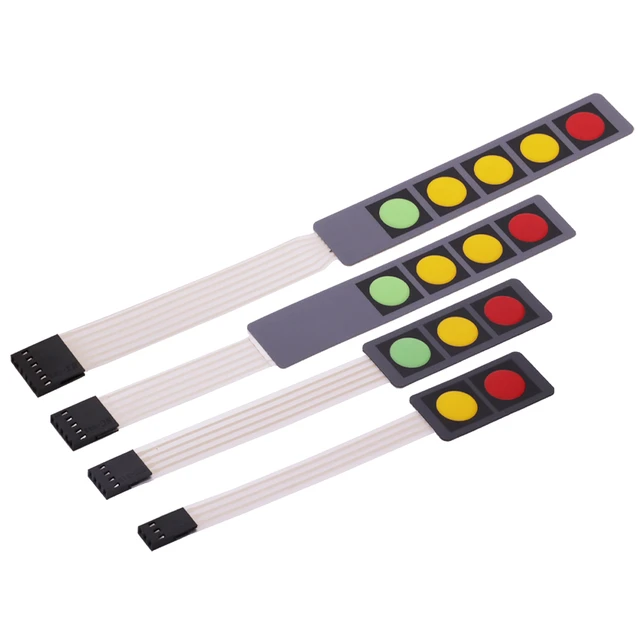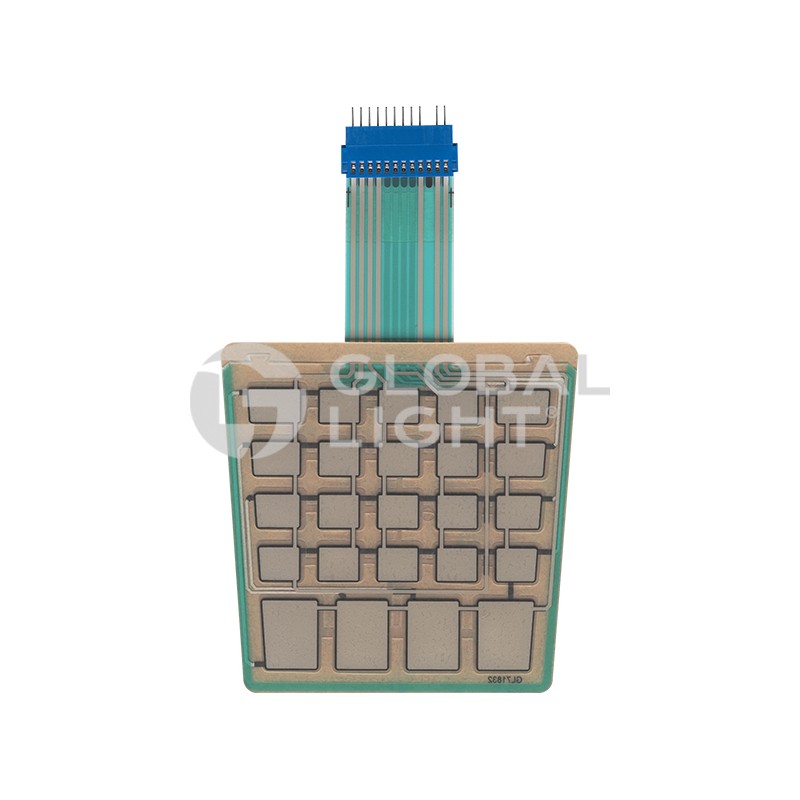Understanding Membrane Changes: The Secret to Reliable and durable Controls

What Are Membrane Layer Switches?
Membrane switches are an advanced solution in the world of interface modern technology, integrating performance and style effortlessly. These gadgets function as an interface between users and electronic systems, integrating a number of elements right into a small layout. Typically constructed from flexible, thin layers of materials, membrane switches are designed to respond to touch, enabling users to interact with machinery and digital tools effectively.
The key components of a membrane layer button consist of a printed circuit layer, graphic overlay, and a spacer layer that avoids unplanned activation. The visuals overlay can be personalized to show brand identity or individual preferences, enhancing aesthetic appeals while making sure functionality. Membrane switches are commonly made use of in numerous applications, consisting of clinical tools, customer electronics, and industrial tools, owing to their durability and resistance to ecological variables such as wetness and dust.
One of the vital benefits of membrane switches is their capacity to endure wear and tear, making them ideal for high-traffic settings. Furthermore, they are lightweight and call for very little space, permitting for ingenious designs in item advancement. On the whole, membrane layer changes represent a functional and efficient choice for contemporary electronic user interfaces, marrying innovation with user-centric design concepts.
How Membrane Switches Over Work
The operation of membrane switches over joints on a straightforward yet reliable system that equates individual input right into digital signals. When a customer presses the switch, the top layer deforms, allowing a conductive element in the circuit layer to make contact with an equivalent conductive pad on the underside of the graphic overlay.
The design of membrane buttons can vary, yet they usually integrate domes or responsive aspects to provide comments to the individual, improving the total experience - membrane switch. The products made use of in membrane switches, such as polyester or polycarbonate, contribute to their durability and resistance to environmental elements, including wetness and dirt. The printed circuits are typically encapsulated, which safeguards them from wear and tear over time.
Benefits of Membrane Switches

Furthermore, membrane layer buttons are recognized for their durability. Constructed from robust materials, they are resistant to dust, wetness, and physical wear, which dramatically expands their life-span contrasted to traditional mechanical switches. This resilience makes them particularly suitable for high-traffic environments and applications requiring longevity.
Another significant benefit is the ease of cleaning and upkeep. The smooth surface area of membrane layer changes lessens dust build-up and is typically invulnerable to spills, making them suitable for settings that require frequent sanitization.
Moreover, membrane layer buttons offer a structured account, causing a thinner style that can be integrated into numerous tools without adding bulk. This feature not just improves the aesthetic appeal yet likewise adds to an extra ergonomic item style.
Applications of Membrane Buttons
Flexible and user-friendly, membrane switches discover applications throughout a variety of markets, including clinical gadgets, consumer electronic devices, and industrial tools. In the clinical field, these buttons are essential to tools such as analysis equipment, person tracking systems, and mixture pumps, where dependability and ease of cleansing are crucial. Their capacity to keep and visit our website endure rough settings performance makes them optimal for such applications.

In customer electronics, membrane buttons are used in products like microwaves, washing makers, and remote controls - membrane switch. Their smooth layout permits user-friendly customer interfaces, enhancing the general customer experience while providing toughness and resistance to wear and tear
Commercial tools also benefits from membrane layer buttons, particularly in control panels for machinery and automation systems. These switches use defense against dust why not find out more and wetness, making certain consistent performance in challenging atmospheres. Their adjustable attributes permit manufacturers to tailor them to specific operational needs, improving effectiveness and performance.
Selecting the Right Membrane Layer Change
When choosing a membrane layer switch, it is vital to think about different aspects that influence performance and suitability for certain applications. The main considerations include environmental conditions, tactile feedback, durability, and layout requirements.
First, assess the operating atmosphere; switches exposed to dampness, chemicals, or severe temperatures call for certain materials to guarantee longevity and capability. Next, assess the need for responsive comments. Depending on customer interaction, some applications may benefit from a tactile response to verify activation, while others may like a non-tactile style for aesthetic reasons.
Longevity is an additional critical variable; membrane layer buttons must be developed to withstand frequent use, influences, and abrasion. Guarantee the selected button can withstand the expected lifecycle, specifically in high-usage situations.

Final Thought
In conclusion, membrane layer switches over offer as crucial parts in the layout of durable and reliable control systems across various markets. The versatility of membrane layer switches over allows for customized remedies that fulfill specific functional demands, reinforcing their importance in modern-day technology.
Membrane layer switches stand for a critical facet of modern user interface style, mixing capability with strength in various applications.Membrane buttons are an innovative remedy in the here world of user interface modern technology, combining functionality and style effortlessly. Normally created from versatile, slim layers of materials, membrane buttons are designed to respond to touch, making it possible for customers to communicate with machinery and electronic gadgets efficiently.
The style of membrane switches can vary, yet they usually integrate domes or responsive elements to offer responses to the individual, boosting the overall experience.In final thought, membrane switches offer as vital elements in the design of resilient and reliable control systems throughout different sectors.